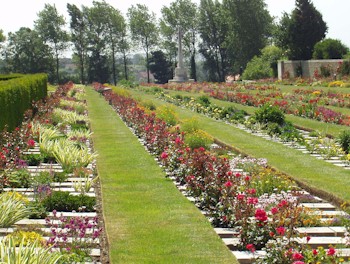|
|
| Home Topics Memorials Miscellany Transcripts References Family History Glossary Latest Beeston Blog About us | Site Search |
|
The first man from Beeston who fought and died with the local Sherwood Foresters (Notts & Derby Regiment) was George Rowland Straw, who died from wounds on 1st February 1915. Sadly, there were to be many more that followed. George Rowland Booth was born in March 18912 at Ilkeston Junction3, the only son of George & Eliza (? née Rowland, formerly Hill) Straw of 41 Denison Street, Beeston. The family moved to Beeston from Ilkeston Junction in the first few years of the 20th century4, where George senior worked as a Leivers lace maker. George Rowland worked, at first, as an iron moulder. He was the only son but had three sisters - Annie, Violet (or Louisa) & Beatrice In October 1908, he decided to enlist in the Army and was accepted into the Sherwood Foresters (Notts & Derby) Regiment5 and joined the 1st Battalion. In September 1910, the Battalion was posted to Bombay, India. When war came in August 1914, the battalion was recalled and sailed on the 3rd September, landing at Plymouth on the 2nd October. It joined the 24th Brigade, 8th Division at Hursley Park near Winchester to prepare for action in Europe. So it was that George Rowland was part of the Expeditionary Force that landed at Le Havre on 5th November 1914. Although details of the circumstances of his death are unclear, the records show that he died of wounds in No 13 General Hospital, Boulogne, on 1st February 19156 and was buried in the Boulogne Eastern Cemetery. In accordance with the normal practice, his medals - the 1914 Star, Victory Medal and British Medal - were passed to his parents after the war. Even more poignantly, his mother received his surviving monetary assets - £11 3s 6d, which would have included his back pay - and a £5 War Gratuity7. Boulogne Eastern Cemetery - is one of the Town Cemeteries and stands on high ground on the eastern side of Boulogne, on the road to St. Omer. Boulogne was one of the three base ports most extensively used by the British armies on the Western Front, throughout the 1914-18 War. It was closed and cleared on 27th August 1914, in consequence of the retreat of the Allies, but was opened again in October and, from that month to the end of the war, Boulogne and Wimereux formed one of the chief Hospital areas. The dead from the Hospitals at Boulogne itself were buried until July 1918 in the Cimeteire de L’East, one of the town Cemeteries. It was found the ground in the Eastern Cemetery was being filled up, in spite of repeated extensions to the south, and a new cemetery at Terlincthun was chosen.8Footnotes 1The photograph of Boulogne Eastern Cemetery is from the Commonwealth War Graves Commission website. (http://www.cwgc.org) 2He was recorded as 10 days old at the time of the census, taken on 5 April 1891. His parents were then living at Trueman Street, Cossall, Notts - i.e. part of Ilkeston Junction (1891 Census : Piece 2667 Folio 94) His age in the CWGC records, repeated elsewhere - including on the memorial in the Parish Church - was recorded as 28. This appears to be incorret (he was 25) as was the inclusion of 'Rowland' as his father's middle name 3His birthplace was often recorded as 'Ilkeston, Derbyshire'. However, the small cluster of mills and housing that is situated around the Ilkeston Junction & Cossall Railway Station was and remains just over the Ilkeston and Derbyshire border in Nottinghamshire and is part of Cossall Parish. 4At the time of the 1901 Census, the family was living at Wentworth Street, Cossall, Notts - i.e. Ilkeston Junction (Piece 3149 Folio 31). In 1911 his parents and sisters were living at 41 Denison Street Beeston (1911 Census - Piece 20427 RD429 SD3 ED2 Sched 22) 5He Attested at Nottingham on 7 October 1908 (Army Service Record) 6Possible conflicting evidence is given in his Service Record which in one place shows that he died of 'Mastoid' - presumably mastoiditis, a bacterial infection of the mastoid bone within the ear which csn go on to infect the skull. In 1915, years before the development of antibiotics, this was often fatal. 7(Army Registers of Soldiers' Effects) 8This desciption of Boulogne Eastern Cemetery is from the Commonwealth War Graves Commission website. (http://www.cwgc.org) |
|
|||||||||||
|
|
|||||||||||||
